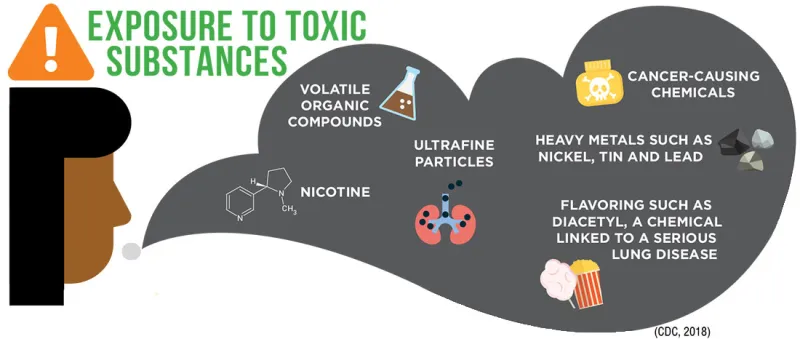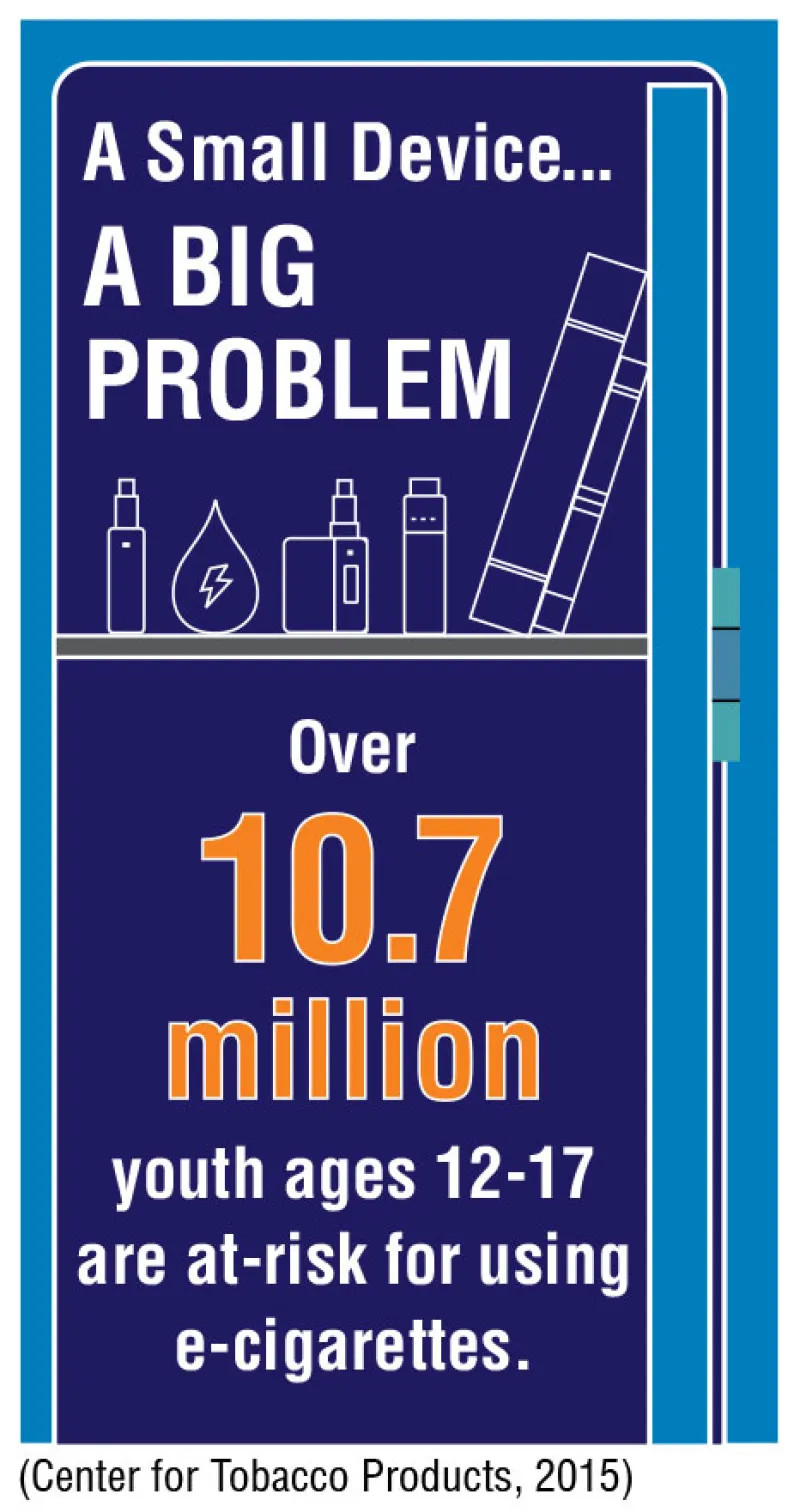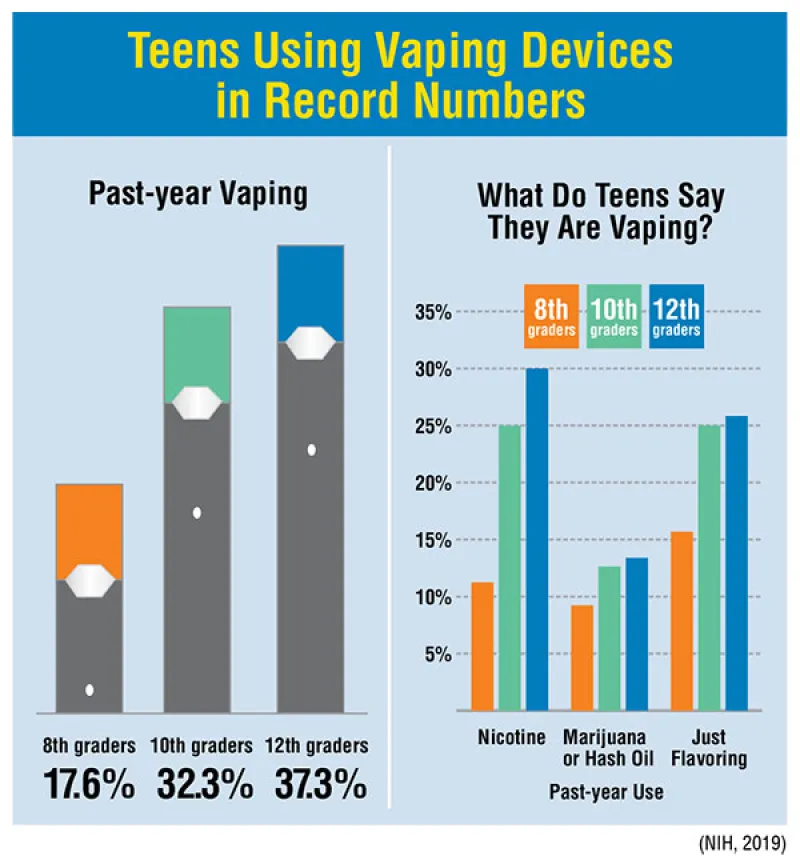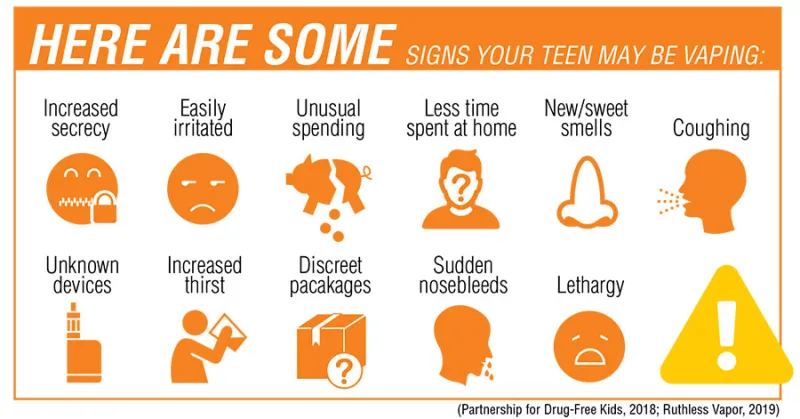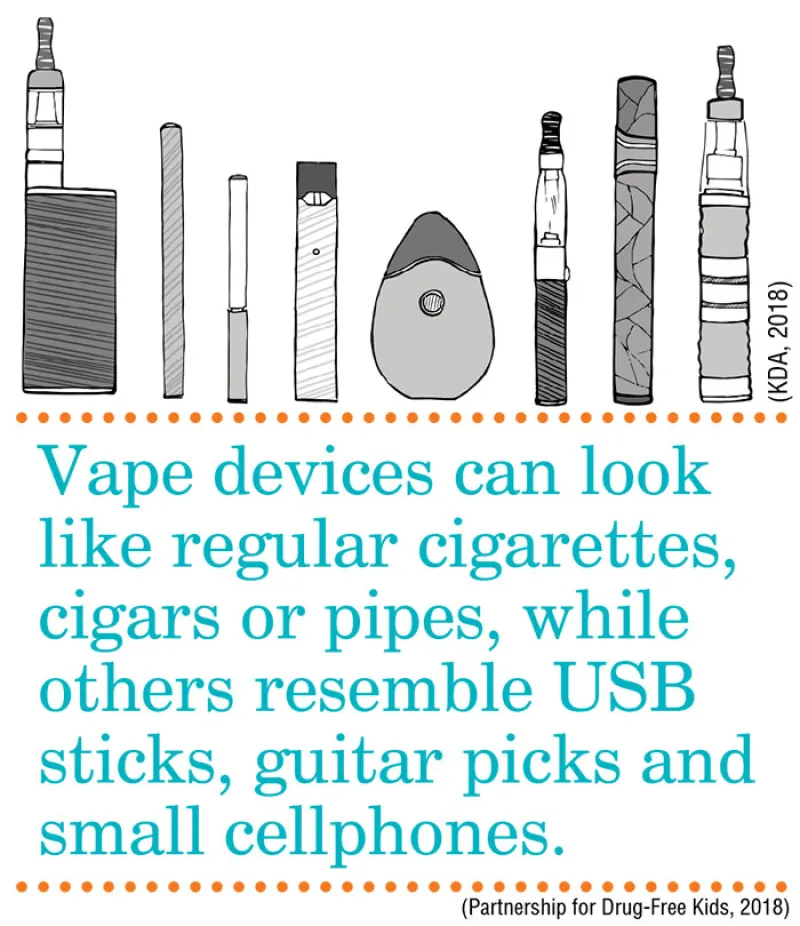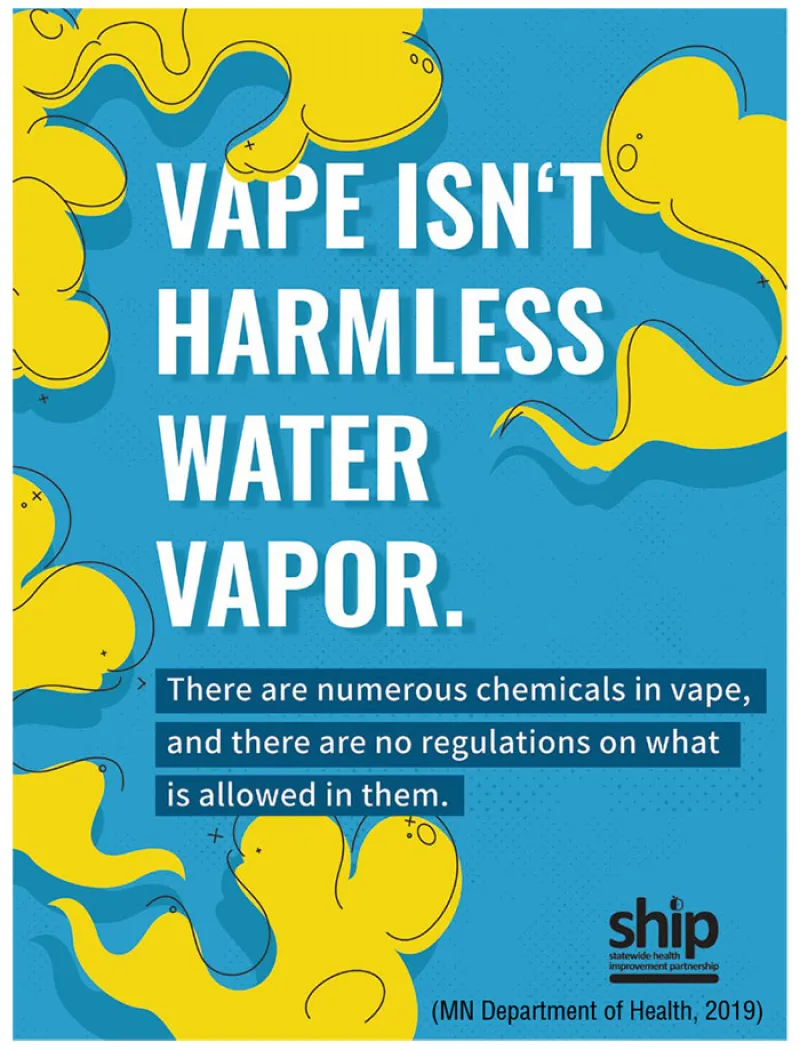Set a good example by being tobacco-free. If you use tobacco products, it is never too late to quit. Talk to a health-care professional, or for free
help, visit https://smokefree.gov or call 1-800-QUIT-NOW. Educate teens and get the conversation about vaping started:
■ Get the “Talk with Your Teen about E-cigarettes” sheet. This tip sheet offers facts and practical ways to start conversations about the risks of e-cigarette use with your child.
■ Download the NDSU Extension publication:
“A Parent’s Role in Substance Use Prevention: Tips for Talking to Youth of All Ages” (YD1912) to understand your role as a caregiver and what you can do to prevent the use of e-cigarettes.
■ Access the new and free “Quitting E-cigarette Texting Program” for teens, adults or parents
of teens with e-cigarette addictions.
(MN Department of Health, 2019)
(Partnership for Drug-Free Kids, 2018)
(Partnership for Drug-Free Kids, 2018; Ruthless Vapor, 2019)
ADDITIONAL RESOURCES:
◆ American Lung Association
◆ U.S. Surgeon General
◆ “The Real Cost” Youth E-Cigarette Prevention Campaign
◆ My Life My Quit
REFERENCES:
Ambrose, B., Rostron, B., Johnson, S., Portnoy, D., Apelberg, B., Kaufman, A., & Choiniere, C. (2014). Perceptions of the relative harm of cigarettes and e-cigarettes among U.S. youth. American Journal of Preventive Medicine, 47, 53-60.
www.sciencedirect.com/science/article/pii/S0749379714001834
American Lung Association. (2016). www.lung.org/about-us/blog/2016/07/popcorn-lung-risk-ecigs.html
Centers for Disease Control and Prevention (CDC). (2018). www.cdc.gov/tobacco/basic_information/e-cigarettes/about-e-cigarettes.html
Centers for Disease Control and Prevention (CDC). (2019a). https://www.cdc.gov/tobacco/basic_information/e-cigarettes/severe-lung-disease.html
Centers for Disease Control and Prevention (CDC). (2019b). https://www.cdc.gov/tobacco/basic_information/e-cigarettes/surgeon-general-advisory/index.html
Center for Tobacco Products. (2015). www.scholastic.com/youthvapingrisks/pdfs/YoutheCigarettePreventionInfographic
FINAL.PDF
Kansas Dental Association (KDA). (2018). www.ksdental.org/home/news-details/2018/12/19/u.s.-surgeon-general-releases-advisory-on-e-cigarette-epidemic-among-youth
Minnesota Department of Health. (2019). www.health.state.mn.us/communities/tobacco/ecigarettes/docs/schooltoolkit.pdf
News in Health (NIH). (2019). https://newsinhealth.nih.gov/2019/02/vaping-rises-among-teens
Partnership for Drug-Free Kids. (2018). https://drugfree.org/article/how-to-talk-with-your-kids-about-vaping
Pentz, M., Shin, H., Riggs, N., Unger, J., Collison, K., & Chou, C. (2015). Parent, peer, and executive function relationships to early adolescent e-cigarette use: A substance use pathway? Addictive Behaviors, 42, 73-78. https://www.sciencedirect.com/science/article/pii/S0306460314003724
Ruthless Vapor. (2019). www.ruthlessvapor.com/blogs/ruthless-e-liquid/teen-vaping#section5
Scholastic. (2015). http://headsup.scholastic.com/students/e-cigarettes-what-you-need-to-know
Reviewed by: Extension Agents
Vanessa Hoines, Liz Larson,
Alice Westby, Amelia Doll,
Caroline Homan, Cindy Klapperich;
Chloe Krinke, M.Ed., LAPC, NCC;
Kim Bushaw, Extension Family
Science Specialist; Brady Weaver,
Tobacco Prevention and Control
